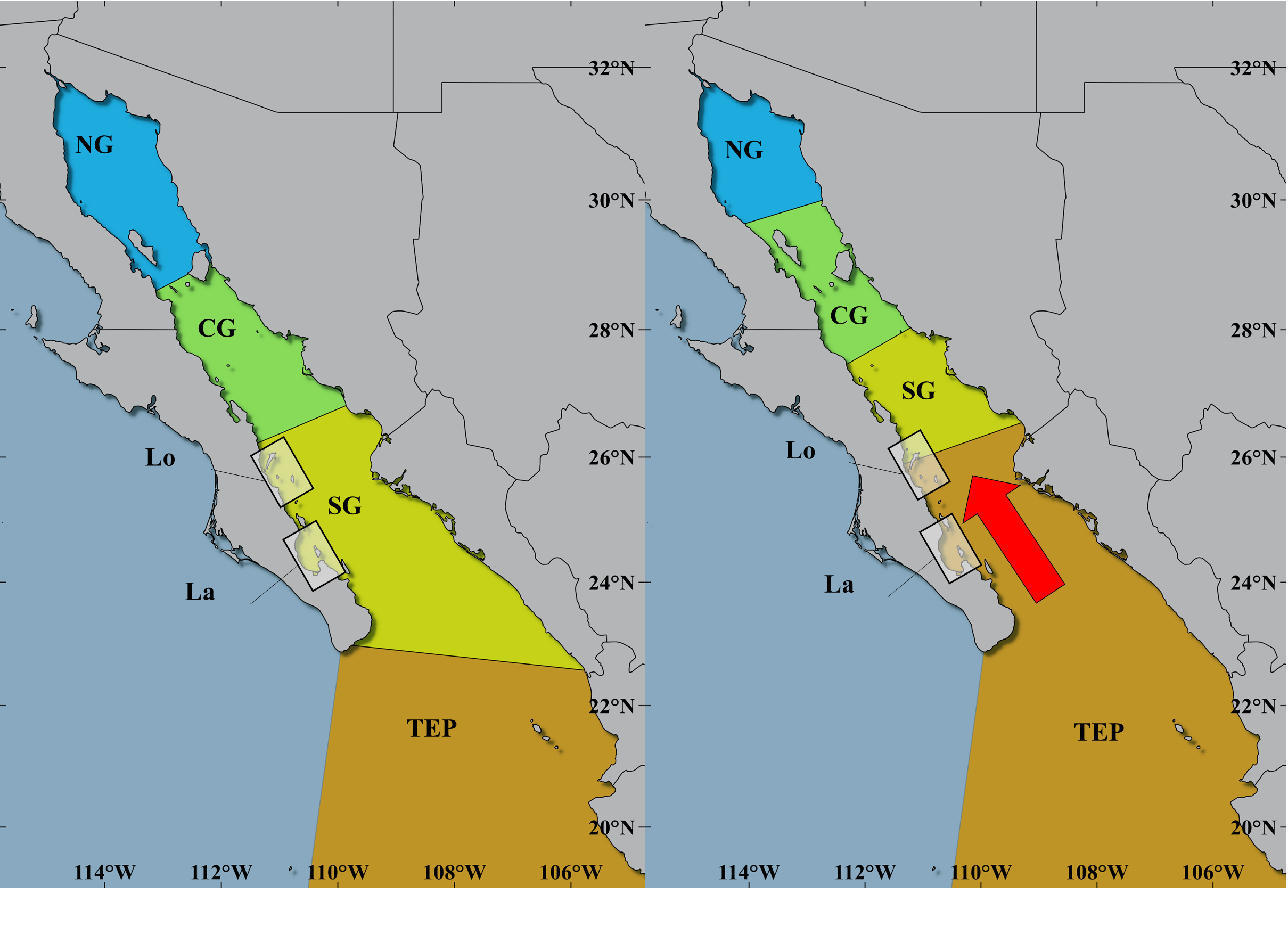“The Gulf of California, once branded as “the Aquarium of the World” due to its high biodiversity and pool of unique species, is subject to increasing fishing pressure and habitat transformation, threatening its biodiversity. Using a database of 17 years of ecological underwater surveys in the rocky reefs of the region, our temporal analyses revealed a generalized loss of richness for species of fishes and epibenthic invertebrates. Moreover, a significant rise of Sea Surface Temperatures (SST) is prompting a tropicalization of the invertebrate community in the region, where species that historically inhabited the subtropical transitional areas in the GOC, reduced their spatial range, while being displaced by species with tropical affinities. Analyzing community differences among reefs trough time using the Local Contribution to Beta Diversity index, we observed that the coupled effects of the defaunation and tropicalization prompted a spatial biotic homogenization over the region, making reefs more similar through time.
 On the left, the map show ecoregions in the GOC. NG is Northern GOC, CG is Central GOC, SG is Southern GOC, TEP is Tropical Eastern Pacific. On the right the same regions are drawn, but shifted northwards according to what we can theoretically expect for the future of the area from the results of this project. The purpose of this figure is just to allow the reader to visualize our conceptualization of a near-future tropicalization scenario in the GOC.
On the left, the map show ecoregions in the GOC. NG is Northern GOC, CG is Central GOC, SG is Southern GOC, TEP is Tropical Eastern Pacific. On the right the same regions are drawn, but shifted northwards according to what we can theoretically expect for the future of the area from the results of this project. The purpose of this figure is just to allow the reader to visualize our conceptualization of a near-future tropicalization scenario in the GOC.
Finally, we found that well-enforced no-take areas can buffer the long-term homogenization of specific reefs, such as Cabo Pulmo National Park. This suggest that overfishing might be an important driver of fish biomasses degradation in the region. The longer-term outcomes of the processes of defaunation, tropicalization and biotic homogenization over ecosystems are still largely unknown. Continuing the support of ecological monitoring programs is, therefore, far-reaching not only to record such effects, but also to identify areas that could serve as last refugia to preserve the biodiversity of a region that once attracted the attention of researchers from around the globe.”